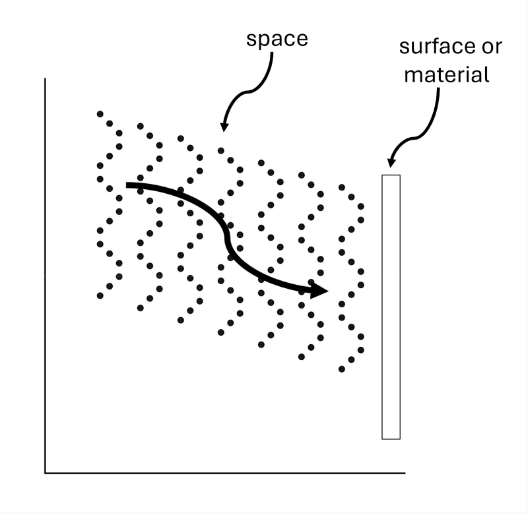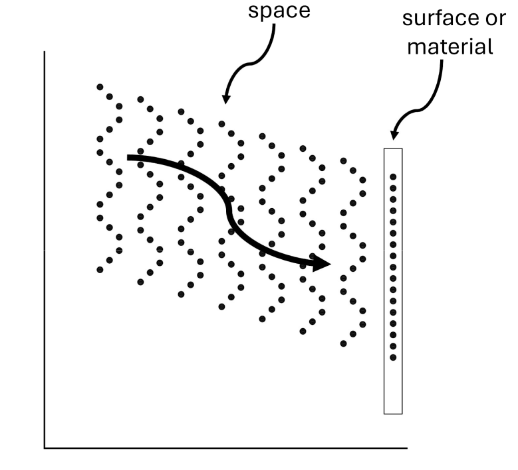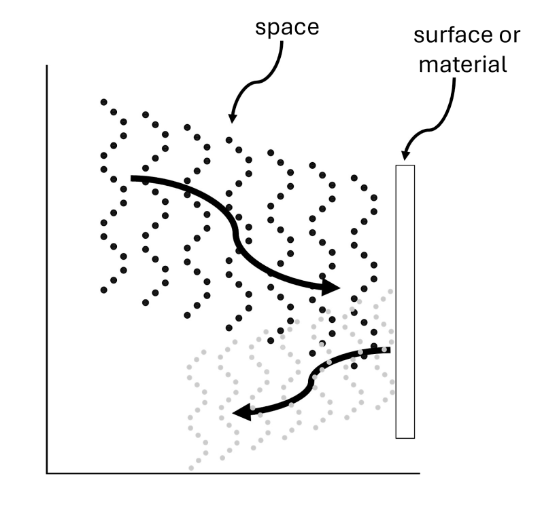The Design Brief® | Volume II | Acoustics and Sound Control for Residential Interior Design
The choices of finishes and materials used in a space directly impact the transmission of sound. Sound—vibrations traveling through air that the human ear can perceive—can be manipulated for both optimizing auditory experiences and for mitigating distracting noise. Interior designers need to have a good understanding of sound transmission, the physics of sound, and noise interventions. Even rooms with the most stunning aesthetic can become unpleasant with excessive noise transmission from outside or from adjacent children’s playrooms or laundry room appliances.
There are many considerations for sound transmission inside our homes—whether it’s for distraction-free home offices or bedrooms, reducing disruptions from outdoor noise such as traffic or urban activity, or creating a peak experience for music enjoyment or a home theater.
Sound and Acoustic Basics
Sound, as noted above, is vibrations we can hear. Noise is the unpleasant sound we often try to reduce. Acoustics is the study of how sound behaves within rooms. The intensity of sound is measured in decibels (abbreviated as dB).
Complete or near silence would have a dB rating of zero. A whisper may be at about 15 dB, and a normal conversation 60 dB. A lawn mower may be about 90 dB and a rock concert or jet engine 120 dB. But this measurement is exponential, not linear. That means a 20 dB sound is one hundred times (not two times) as loud as 10 dB, and 30 dB is 1000 (not three times) that of 10 dB. Long exposure to sound above 85 dB can cause hearing loss.
Decibel measurements really become insignificant though, when designers consider specific client needs. Some people require absolute silence to sleep or concentrate, while others can simply tune out a significant amount of ambient noise. Older people or anyone who has experienced hearing loss may be unable to detect any sound below 50 dB.
The key is to understand the acoustical needs of your client in their home, and to make material and surface selections in response to these needs.
How Materials and Surfaces Affect Sound
Understanding how materials and surfaces affect sound begins with three concepts: transmission, absorption, and reflection. Different properties of materials (density, thickness, hardness, smoothness, stiffness, and porousness) determine whether sound waves will be transmitted, absorbed, or reflected when they come into contact with those surface properties.
The graphics below illustrate these principles.
CONCEPT 01: SOUND TRANSMISSION
Here are sound waves traveling through space toward a surface or material.
Depending on the properties of the surface or material, some sound waves may be transmitted through the material or surface and will be detectable on the other side. This is called sound transmission. The thickness or density of a material will impact the amount of sound that is transmitted through it.
Glass is an example of a material through which sound waves are easily transmitted. Because the glass used in windows is a smooth, thin material, sound travels through it fairly easily. Inhabitants of homes on busy streets, near train tracks or airplane routes, or near pedestrian activity certainly encounter transmitted noise through window glass.
However, sound can also be transmitted through wall, ceiling, and floor assemblies and doors within homes. Apartment dwellers are well aware of this phenomenon.
CONCEPT 02: SOUND ABSORPTION
The second very important consideration regarding sound interacting with surfaces and materials is sound absorption.
When sound waves encounter soft, porous surfaces that absorb sound, their movement is stopped in its tracks, and the sound ceases traveling through space. Absorption is a critical intervention strategy for sound management.
The image below illustrates sound waves moving through space and encountering a soft, porous surface. The sound is absorbed into the surface and stops. There is no additional sound perception.
Rugs, draperies, and upholstered furniture are excellent examples of materials that absorb sound. Wall coverings and resilient flooring—because they are not completely hard or stiff—can also create a good deal of sound absorption (as opposed to sound reflection from very hard materials).
But perhaps the best sound absorption is possible with materials created explicitly for this purpose: foam acoustical panels for walls or ceilings, porous acoustical ceiling tiles, and sound-baffling materials within walls, ceilings, or floors.
Wherever sound reduction is desired, soft, porous, or pliable surfaces or materials should be used. The wall section diagrams below illustrate an empty wall cavity and one with fiberglass batting to hamper sound transmission from one room to the next.
CONCEPT 03: SOUND REFLECTION
The final sound manipulation strategy—sound reflection—does the opposite of absorption.
Materials and surfaces that are hard, dense, thick, and stiff cause sound to ricochet and rebound from a surface.
Reflective surfaces amplify and increase sound. When sound waves hit hard surfaces they literally bounce, and create more sound waves traveling through space.
Surfaces that create sound reflection include concrete, wood, stone, metal, and painted gypsum wallboard. Reflection can continue as sound reverberates through a space, bouncing off several adjacent surfaces.
This is called reverberation, the persistence of multiple reflections of sound in a space. Walls ceilings, and floors play a big part in sound reverberation.
Where an abundance of sound and a rich sensory experience is desired—such as in a concert hall—a magnitude of hard, flat surfaces to create reflection and reverberation are appropriate.
Conversely, in spaces where reverberation is not desired—such as a library, home office, or bedroom—soft surface materials that absorb sound should be used.
Most people have experienced a situation where the intensity of sound in a space—such as in an overly noisy restaurant—is bothersome. When sound levels are not optimal (either too loud or too quiet) for the intended activity in a space, it means the materials were not appropriately chosen. A restaurant that has tile floors, rather than carpet, may have more sound reflection and reverberation than would be ideal.
Sound Intervention Solutions in Residential Homes
Within residential spaces, the desired sound intervention is often to lower sound transmission and reflection. This may be the case where noise is being transmitted into the home from the outdoors through windows, where sound is being transmitted from one room to the next, or where sound is reflected within a space, creating unwanted amplification.
The solution is often to add additional soft and porous materials that absorb noise. Soft window treatments or draperies can reduce some sound transmission through windows. Rugs or carpet that cover hard flooring can reduce sound reflection within a space. Even the addition of throw pillows may reduce some notable sound absorption. And soft wallcoverings (such as grasscloth or fabric wallcovering) can reduce sound transmission through walls between adjacent rooms. It is no mystery that hotel guest rooms are almost always carpeted and often have upholstered headboards and wallcovering. These surfaces go a long way to reduce noise transmission between adjacent rooms.
Identifying the desired sound strategy in a home can inform the selection of appropriate finishes and materials for appropriate noise control and reduction. How and when do you do this? During your client onboarding process.
Want to explore more issues? Here are a few favorite past editions:
Want The Design Brief® delivered straight to your inbox?
If you liked this email, be sure to sign up for The Design Brief®, our twice monthly publication that gives you bite-sized lessons on all the technical interior design topics you didn’t learn (or forgot) from design school—straight from our resident interior design professor!
Looking for more? Keep reading:



















